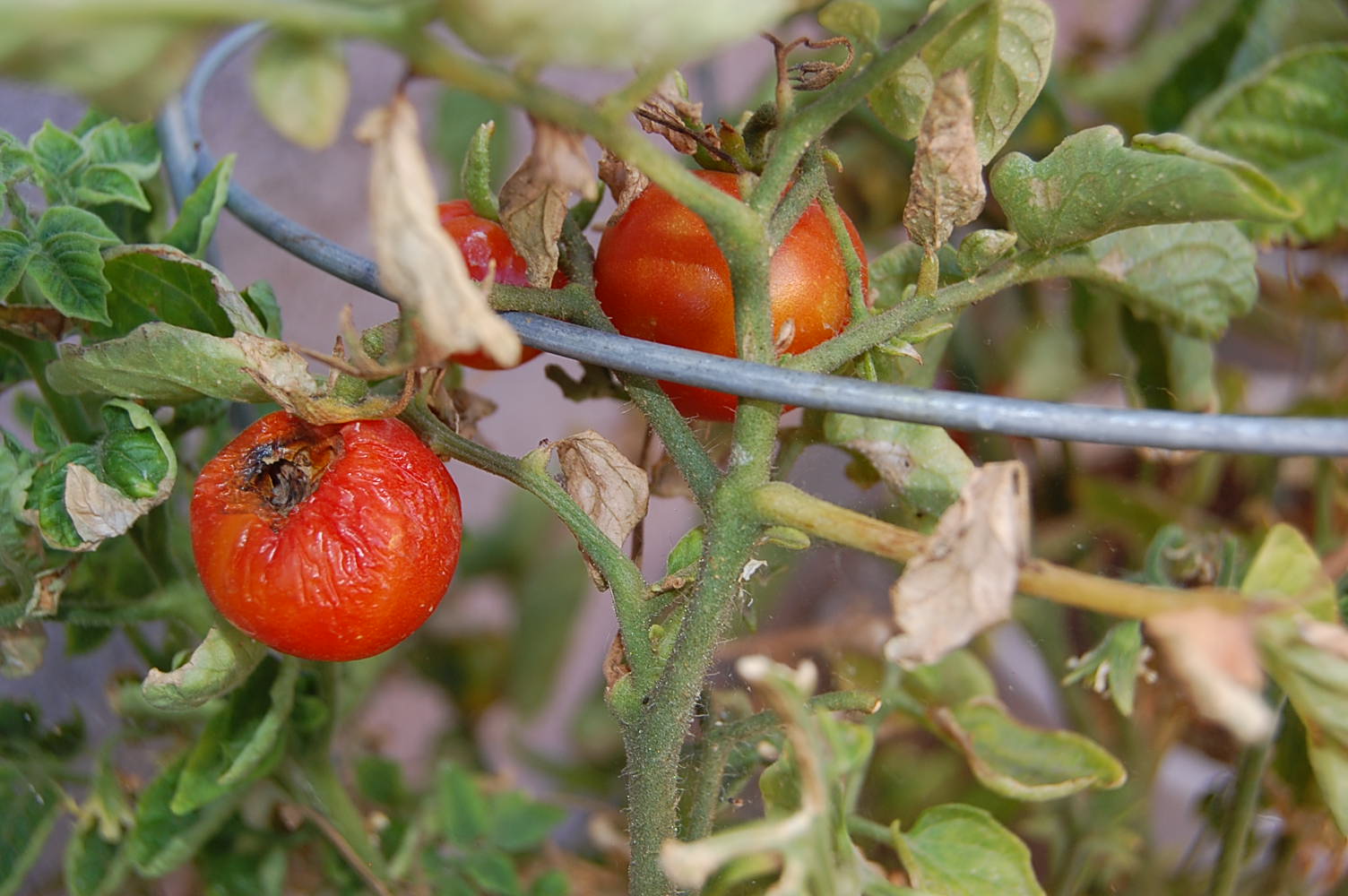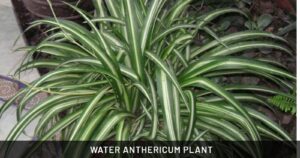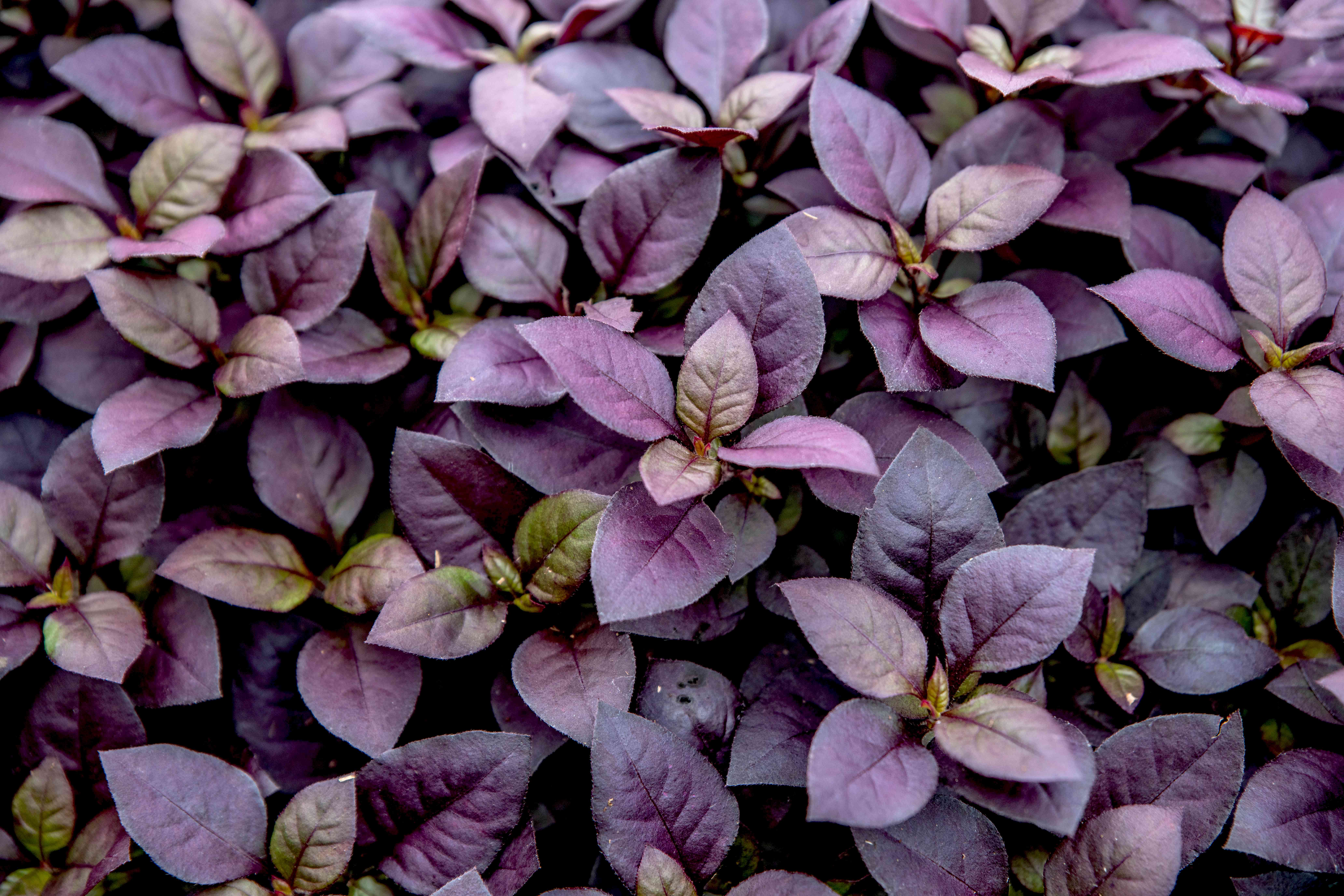Saving Your Drowning Tomatoes: How to Identify and Rescue Overwatered Plants
That prized tomato plant you’ve been nurturing is suddenly looking sad, with yellowing leaves and stunted growth. Before reaching for fertilizer or pesticides, consider a counterintuitive culprit: too much water. While tomatoes need consistent moisture, overwatering is one of the most common and devastating mistakes in tomato cultivation. This comprehensive guide will help you identify overwatered tomato plants, implement rescue strategies, and establish proper watering practices to ensure a bountiful harvest.
Signs Your Tomato Plants Are Drowning: Recognizing Overwatering
Tomatoes send clear distress signals when they’re receiving too much water. Learning to recognize these symptoms early can mean the difference between a quick recovery and complete crop failure.
Visual Symptoms of Overwatered Tomatoes
Leaf Discoloration and Changes
- Yellowing leaves, particularly on the lower portions of the plant
- Leaves that appear pale, limp, or translucent
- Brown spots or blotches that don’t resemble typical disease patterns
- Leaves curling downward or developing a wrinkled appearance
Stem and Overall Plant Appearance
- Swollen, puffy stems that may crack or split
- Stunted growth despite seemingly favorable conditions
- Wilting that doesn’t recover in the evening or after reducing temperature
- Soft, mushy stems near the soil line
Root Problems
- Visible signs of root rot if you carefully examine the root system
- Dark brown or black roots instead of healthy white or tan
- Unpleasant, sour smell emanating from the soil
- Roots that break easily when touched
Behavioral Signs of Excess Water
Beyond visual cues, tomato plants exhibit behavioral changes when overwatered:
- Slower growth compared to properly watered specimens
- Blossom drop without fruit formation
- Reduced fruit production or smaller fruits
- Fruit splitting due to irregular water uptake
- Increased susceptibility to fungal and bacterial diseases
- Attraction of certain pests that prefer wet conditions
Distinguishing Overwatering from Other Issues
Confusingly, some overwatering symptoms mirror other problems:
Overwatering vs. Underwatering
- Underwatered tomatoes have crisp, brown leaf edges
- Overwatered leaves tend to be soft and yellowed throughout
- Underwatered stems remain firm while overwatered stems become soft
- Soil tells the story: consistently soggy soil indicates overwatering
Overwatering vs. Nutrient Deficiencies
- Nitrogen deficiency causes uniform yellowing from bottom to top
- Overwatering causes patchy yellowing and affects plant vigor
- Nutrient issues often resolve with feeding; overwatering worsens
- Water-stressed plants can’t efficiently absorb nutrients, creating compound problems
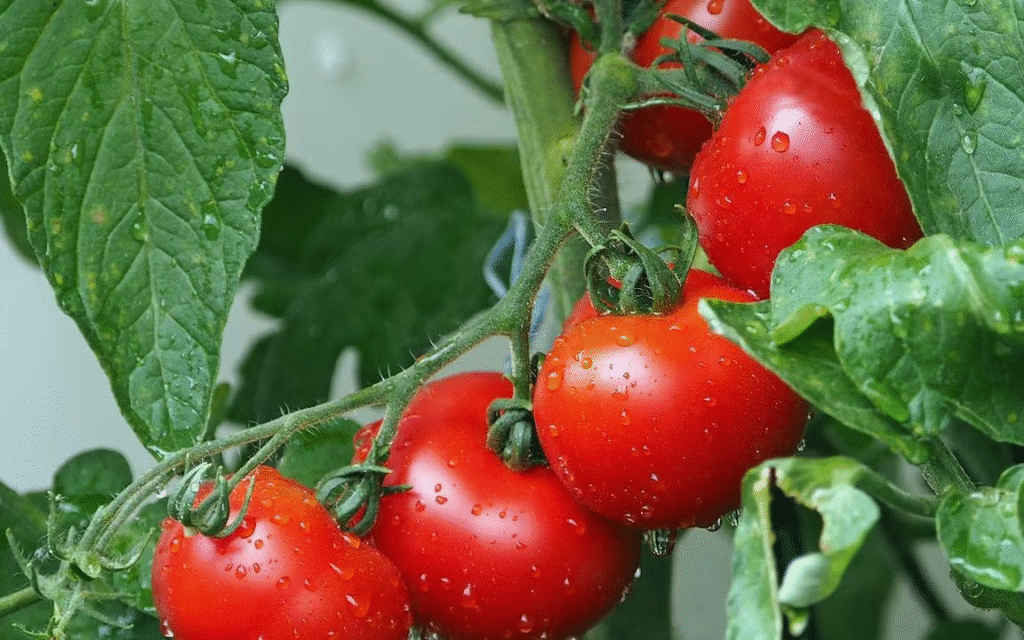
Why Overwatering Happens: Understanding the Root Causes
Before addressing the solution, it’s crucial to understand why tomato plants get overwatered in the first place.
Environmental Factors
- Weather Patterns: Continuing regular watering during rainy periods
- Soil Composition: Heavy clay soils retain moisture longer than sandy soils
- Drainage Issues: Compacted soil, poor container drainage, or low-lying garden areas
- Temperature Fluctuations: Cooler temperatures reduce water needs, but gardeners often maintain the same watering schedule
Container-Specific Challenges
Tomatoes grown in pots face unique overwatering risks:
- Limited soil volume concentrates moisture
- Inadequate drainage holes restrict water movement
- Decorative outer pots can trap water
- Saucers collect excess water that wicks back into the soil
- Potting media that retains too much moisture
Gardener Habits and Misconceptions
Many overwatering issues stem from misconceptions:
- The belief that more water equals more growth
- Following rigid watering schedules rather than responding to plant needs
- Compensating for heat by overwatering rather than mulching
- Shallow watering that encourages surface roots
- Misinterpreting wilting (which can be caused by both over and under-watering)
First Aid for Overwatered Tomato Plants: Rescue Strategies
If you’ve identified overwatering, swift action can often save your tomato plants. The severity of symptoms will determine your approach.
Immediate Interventions
For Garden Tomatoes
- Stop watering immediately and allow the soil to dry out
- Improve drainage around plants by creating channels for water to flow away
- Gently fork soil around plants (not too close to roots) to increase aeration
- Apply a layer of mulch several inches away from stems to regulate moisture
For Container Tomatoes
- Move pots to a sheltered area if rain is expected
- Elevate containers on pot feet or bricks to ensure complete drainage
- Check and unclog drainage holes that may be blocked by roots or debris
- Remove any standing water in saucers or decorative outer pots
- Consider repotting if soil is extremely saturated or shows signs of mold
Addressing Root Rot
If your tomato plants show signs of root rot (dark, mushy roots with an unpleasant smell), more aggressive intervention is necessary:
- Carefully remove the plant from the soil or container
- Gently wash away affected soil from the root system
- Trim away damaged roots using sterilized pruning shears
- Replant in fresh, well-draining soil with proper amendments
- Apply a fungicide specifically formulated for root diseases
- Reduce the foliage by 1/3 to decrease the plant’s water needs during recovery
Foliage Management During Recovery
Managing the above-ground portion of overwatered tomatoes aids recovery:
- Remove severely affected leaves to reduce stress on the plant
- Maintain good air circulation by proper spacing and selective pruning
- Avoid fertilizing until new growth appears, then use half-strength solutions
- Consider a temporary shade cloth in hot weather to reduce transpiration demands
- Monitor closely for secondary infections that may take advantage of the plant’s weakened state
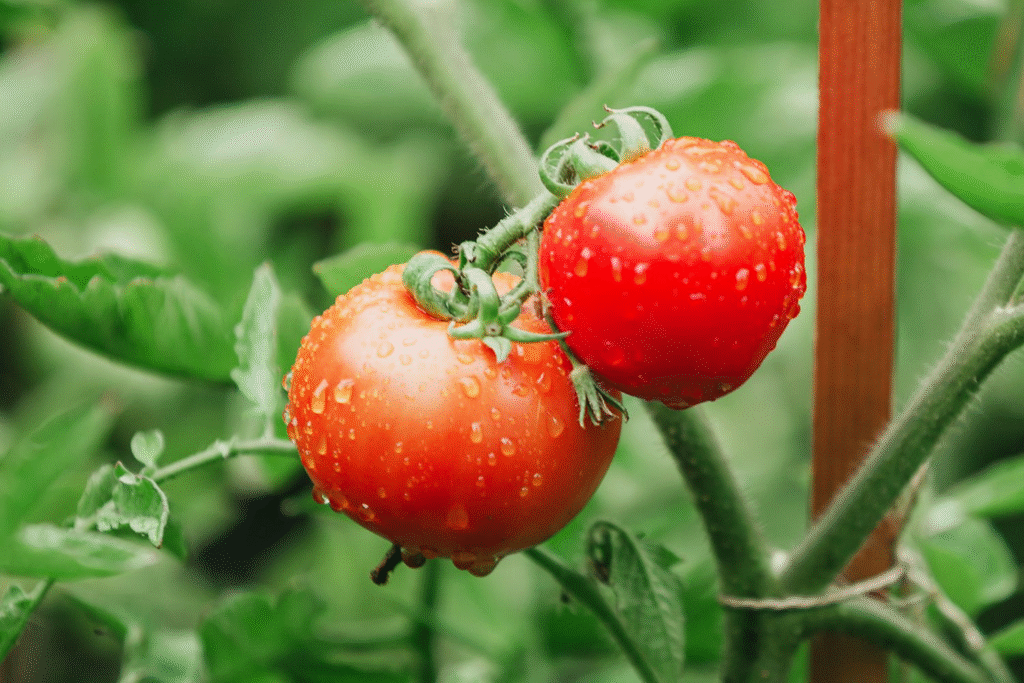
Prevention: Establishing Proper Watering Practices for Tomatoes
Once your plants are on the road to recovery, implement these practices to prevent future overwatering issues.
Watering Fundamentals for Healthy Tomatoes
Timing and Frequency
- Water in the morning to allow excess moisture to evaporate
- Check soil moisture at root level (2-3 inches deep) before watering
- Adjust watering frequency based on weather conditions, plant size, and fruit development
- During fruit development, aim for consistent moisture levels to prevent cracking
Technique Matters
- Direct water at the soil level, not the foliage
- Use drip irrigation or soaker hoses for efficient, targeted moisture
- Water deeply and less frequently to encourage deep root development
- Allow the top inch of soil to dry between waterings
Quantifying Water Needs
- Newly planted tomatoes: 1-2 gallons per week, split into 2-3 applications
- Established plants: 2-3 gallons per week during moderate weather
- Fruiting plants: May need up to 3-4 gallons weekly during hot, dry periods
- Container tomatoes: Check daily, water when top inch of soil is dry
Soil Improvements for Optimal Drainage
Modifying your growing medium prevents water retention problems:
For Garden Beds
- Incorporate 2-3 inches of compost to improve structure
- Consider raised beds in areas with poor drainage
- Add organic matter annually to maintain soil health
- Test drainage by digging a 12-inch hole, filling with water, and timing absorption
For Containers
- Use high-quality potting mix specifically formulated for vegetables
- Add 20-30% perlite or coarse sand to improve drainage
- Ensure containers are at least 5 gallons for determinate varieties, 10+ gallons for indeterminates
- Choose fabric or terracotta pots that allow moisture evaporation
Mulching Strategies for Moisture Regulation
Proper mulching helps regulate soil moisture:
- Apply 2-3 inches of organic mulch around plants
- Keep mulch several inches away from stems to prevent rot
- Use straw, pine needles, or shredded leaves for good aeration
- Refresh mulch mid-season as it decomposes and settles
Special Considerations for Container-Grown Tomatoes
Potted tomatoes face unique challenges and require specific strategies to prevent overwatering.
Container Design and Selection
Choosing the Right Container
- Select containers with sufficient drainage holes (at least 4-5 holes)
- Consider self-watering containers with overflow mechanisms
- Use fabric pots in humid climates for enhanced evaporation
- Ensure containers are properly sized for the variety
Strategic Potting Techniques
- Create a drainage layer with coarse material at container bottom
- Use a moisture meter to accurately assess water needs
- Position pots where they receive morning sun but afternoon shade in hot climates
- Elevate containers on feet or bricks to ensure complete drainage
Recognizing Overwatered Tomatoes in Pots
Container tomatoes show distinct overwatering symptoms:
- White, fuzzy mold on soil surface
- Green algae growth on container sides or soil surface
- Water visibly seeping from drainage holes days after watering
- Fungus gnats hovering around the container
- Slow draining when watered
Recovery Protocol for Potted Tomatoes
When container tomatoes suffer from overwatering:
- Immediately move to a sunny, breezy location to aid evaporation
- Gently remove from the pot and assess root health
- Repot in fresh soil if current medium is waterlogged
- Size down the container if the plant has lost significant root mass
- Adjust watering schedule based on environmental conditions
- Monitor closely for the first week after intervention
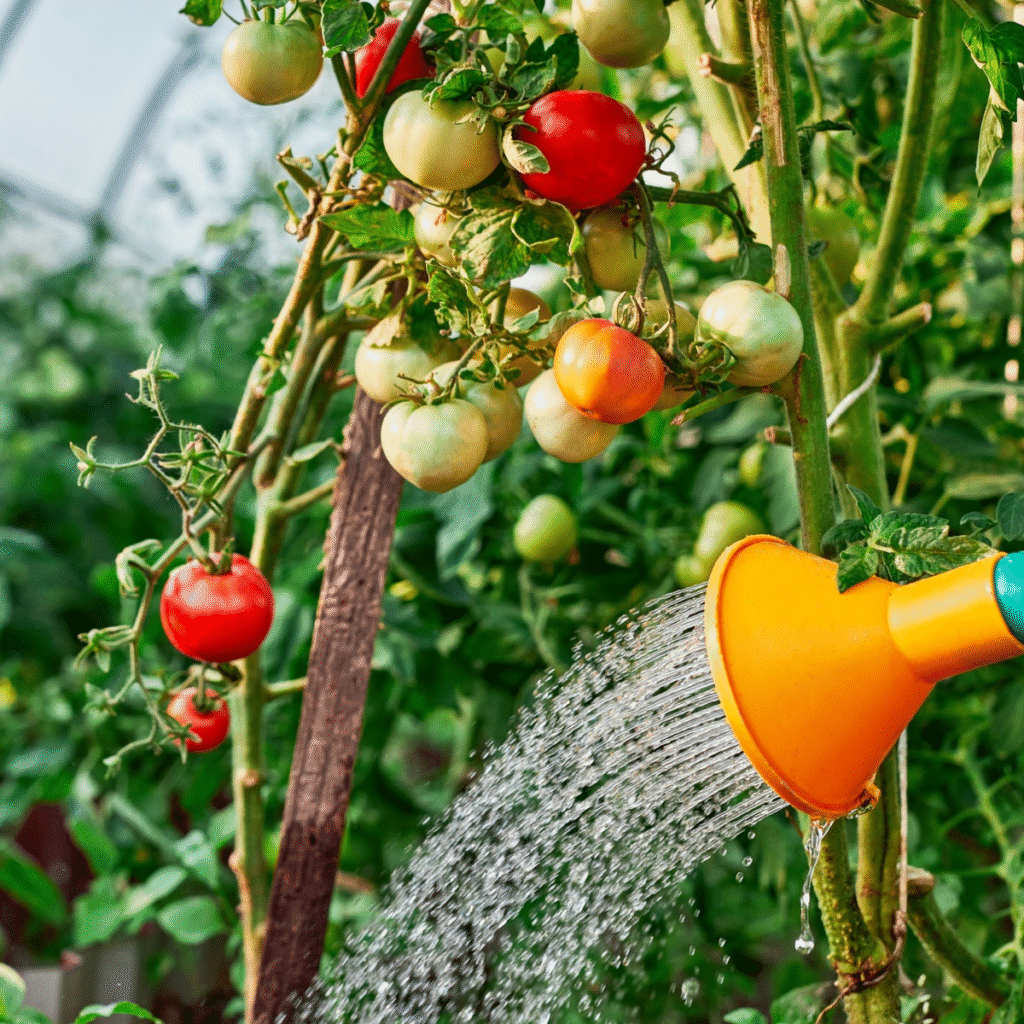
Can Tomatoes Recover from Severe Overwatering?
The question many gardeners ask: can severely overwatered tomatoes be saved? The answer depends on several factors.
Recovery Potential Assessment
Favorable Recovery Factors
- Young, vigorous plants have better recovery chances
- Prompt intervention before root rot becomes extensive
- Strong root systems that still have healthy portions
- Varieties known for disease resistance and vigor
Signs Recovery May Be Unlikely
- Stems soft and mushy at the soil line
- Over 50% of roots are brown or black
- Severe wilting that doesn’t improve after drainage improvements
- Presence of advanced fungal or bacterial infections
Timeline for Recovery
Understanding the recovery process helps set expectations:
- First 48 hours: Wilting may temporarily worsen as plants adjust
- 3-7 days: Soil should reach appropriate moisture level
- 1-2 weeks: New leaf growth indicates successful recovery
- 2-4 weeks: Plant should resume normal growth patterns
- 4-6 weeks: Fruit production may restart if growing season permits
When to Start Over
Sometimes the kindest approach is to replace severely damaged plants:
- If diagnosis occurs late in the growing season
- When diseases have spread throughout the plant
- If roots are extensively rotted
- When recovery seems unlikely and garden space is limited
Seasonal Adjustments: Adapting Watering to Environmental Changes
Successful tomato cultivation requires adjusting watering practices throughout the growing season.
Spring Establishment Phase
- Water newly transplanted tomatoes thoroughly but allow soil to dry slightly between waterings
- Monitor closely as temperatures fluctuate
- Be prepared to protect plants and adjust watering during late frosts
- Focus on developing strong root systems through deep, infrequent watering
Summer Heat Management
- Increase watering frequency during extreme heat
- Apply mulch to conserve moisture and moderate soil temperature
- Consider temporary shade cloth during heatwaves
- Water early in the morning when evaporation rates are lower
Fall Transition Strategies
- Reduce watering as temperatures cool
- Allow soil to dry more between waterings
- Remove excess mulch to allow soil to breathe
- Adjust container positions to maximize diminishing sunlight
Companion Solutions: Cultural Practices to Enhance Watering Success
Proper watering works best when combined with other sound cultural practices.
Plant Spacing and Air Circulation
- Plant tomatoes with adequate spacing (24-36 inches for most varieties)
- Prune lower foliage to improve air circulation near soil level
- Use vertical growing systems to keep foliage off the ground
- Position plants for maximum morning sun exposure
Balanced Nutrition During Recovery
Proper nutrition supports recovery from overwatering:
- Hold off on fertilizing until plants show signs of recovery
- Apply balanced, organic fertilizers at half-strength initially
- Focus on potassium and calcium for stronger cell walls
- Consider foliar feeding to bypass damaged root systems
Pest and Disease Vigilance
Overwatered plants are vulnerable to secondary problems:
- Monitor for early signs of fungal diseases like early blight
- Watch for pests that target weakened plants
- Apply organic preventative measures like neem oil
- Remove and dispose of seriously diseased plant material
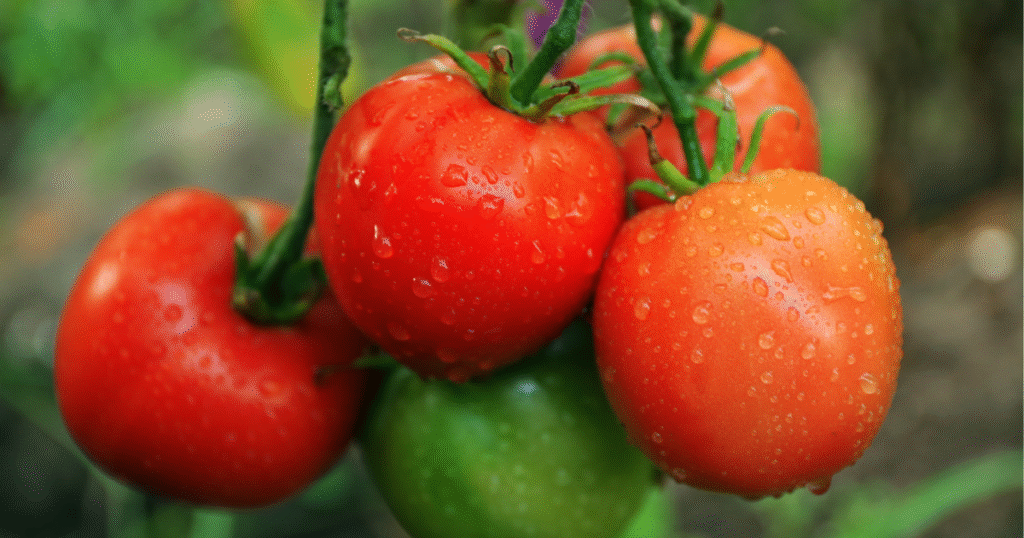
Learning from Overwatering: Building Better Tomato Growing Systems
Use the experience of overwatering to create more resilient growing systems.
Irrigation Technology Solutions
Consider these watering tools to prevent future problems:
- Drip irrigation systems with timers and moisture sensors
- Rain gauges to track natural precipitation
- Moisture meters to accurately assess soil conditions
- Smart irrigation controllers that adjust to weather conditions
Record-Keeping for Water Management
Maintain a simple garden journal tracking:
- Rainfall amounts and patterns
- Watering dates and approximate quantities
- Visual plant responses to watering changes
- Symptoms of stress and their resolution
Creating Resilient Tomato Plants
Focus on developing tomato plants that can better withstand watering fluctuations:
- Select varieties suited to your climate conditions
- Graft onto resilient rootstock in challenging environments
- Develop deep root systems through early growth training
- Build soil health for better water management
Conclusion: Balancing the Water Equation for Tomato Success
Growing thriving tomato plants requires finding the delicate balance between too little and too much water. By learning to recognize the signs of overwatering, implementing immediate rescue strategies, and developing proper long-term watering practices, you can save struggling plants and prevent future problems.
Remember that tomatoes are remarkably resilient plants with a strong will to survive. Even severely overwatered specimens often recover with proper intervention, rewarding your efforts with delicious fruits and renewed vigor. Use each watering challenge as an opportunity to deepen your understanding of these beloved garden plants and refine your cultivation practices.
By monitoring soil moisture, adapting to environmental conditions, and responding to your plants’ specific needs rather than following rigid schedules, you’ll develop an intuitive approach to tomato watering that leads to healthier plants and more abundant harvests.
